Why Are Corporate Climate Disclosures Important, and How Can Investors Put the Pressure On?


An orange hue tints New York City on June 7 as smoke from more than 100 wildfires across Quebec, Canada, filters south. Wildfire seasons are starting earlier, lasting longer and causing more damage due to climate change, scientists say. (Image: Metropolitan Transportation Authority/Flickr)
The annual Non-Disclosure Campaign engages investors to directly request climate disclosures from top companies responsible for high levels of greenhouse gas emissions.
Organized by the nonprofit CDP (formerly the Carbon Disclosure Project), this year's campaign includes nearly 300 global financial institutions with almost $29 trillion in assets under management. They're calling for disclosure from over 1,600 high-impact companies — including Saudi Aramco, ExxonMobil, Tesla, Chevron, Caterpillar and Volvo. Together, these companies emit nearly the same amount of greenhouse gases as the United Kingdom, European Union and Canada combined, according to CDP. And they've all failed to respond to the nonprofit’s climate disclosure requests.
So, why are climate disclosures important, and how can investors and other stakeholders put the pressure on more companies to disclose? We sat down with Sebastian O’Connor, an associate director at CDP whose team has conducted the Non-Disclosure Campaign since 2017, to learn more.
Why are environmental and climate disclosures important?
“The theory of change behind CDP is quite simply what gets measured gets managed,” O’Connor said. “The end goal of all of our work on climate change is to get emissions down to zero. To get to that point, you need a target that is feasible but ambitious. And to get a target, you need to know where you start.”
While climate disclosures are the most common kind of disclosure reported to CDP, many companies also disclose their water and forest impacts, O’Connor said. “It is more than climate. The whole aspect of nature should be disclosed against — climate and nature are interlinked.”
Corporate climate disclosures encompass business activities that produce emissions, including in the company value chain. Because the world still lacks a global standardized reporting framework, CDP is one of the recognized industry leaders in evaluating climate and nature impacts.
“CDP is the best avenue for standardized, comparable disclosures that can be assessed and graded to see how well a company is doing,” O’Connor said. “We need to know how corporations are impacting the environment in order to create a sustainable economy.”
Why do companies fail to disclose?
Corporations give various reasons for refusing to disclose their climate, water or other nature-related impacts. Some companies cite the time and resources it takes to complete a CDP questionnaire, while others choose to publish their own sustainability reports instead of going through third parties. But self-published reports can be bias, O'Connor said.
“The devil is truly in the details, as companies can decide what to omit and what to publish,” he told us. “Will companies put out anything that goes against the narrative of them always making progress?”
CDP also allows the public to compare companies against others in their peer group in a standardized way that is assessed by an independent third party.
Putting on the pressure
O’Connor thinks chronic non-disclosing companies might not be getting enough pressure from regulators and their investors, but this is changing. “There is clear pressure from regulatory regimes in every part of the world,” he said. “Regulators are paying attention because climate and nature impact the financial security of the world economy. This year, our Non-Disclosure Campaign got 288 signatories to sign on, a quadruple increase from 2017.”
Supporters of this year’s campaign included investors, asset managers, asset owners, insurance companies and other financial institutions. The nonprofit typically sees success because of the direct, simple nature of the requests, O’Connor said.
“CDP acts as an effective bridge between financial institutions and the corporate world,” he said. “We facilitate meetings that often revolve around companies giving their reasons for not disclosing. Then, investors are able to show the benefits to disclosing. When this happens, we have a high rate of previously non-disclosing companies disclosing the following year.”
As governments around the world move toward standardized reporting frameworks, CDP is working to ensure that the regulations are rigorous and ambitious, O’Connor said.
“CDP came into play 20 years ago because regulation did not exist,” he explained. “We formed the foundation of the ESG [environmental, social and governance] universe that we see today." While regulated disclosures are a welcome change, "we can also influence these regulations to make sure they do not just go to the lowest common denominator," he said.
“It is about more than just disclosure. We want to help guide companies through every step that leads them to being truly sustainable.”
Setting the Standard for More Sustainable Agriculture in New Zealand


Red meat farming is not typically at the top of the environmental balance sheet. But farmers and policymakers in New Zealand are doing their best to change that, with government efforts like the world’s first tax on agricultural emissions and industry standards like the New Zealand Farm Assurance Program. Industry organizations, like Beef + Lamb New Zealand, work with farmers to implement sustainable agriculture methods that produce some of the world’s best beef and lamb, while also ensuring the health of their lands and environment for future generations.
So, what do the country’s sustainable agriculture standards and strategies look like, and what can the rest of the world learn from them? We spoke with leaders in New Zealand’s agricultural sector to find out.
Creating harmony with the land
Silver Fern Farms, a cooperative of 16,000 New Zealand sheep, cattle and deer farmers, is just one example of the export brands Beef + Lamb New Zealand works with that takes its stake in regenerative and sustainable agriculture seriously.
“New Zealand farm systems are built on understanding underlying natural capital and matching different types of animals in a grazing context to what grows on those farms,” said Matt Harcombe, sustainability manager at Silver Fern Farms. “We call that the grass curve.”
Put simply, the grass curve refers to how much grass is available for livestock grazing throughout the year, based on seasonality, biodiversity, and weather patterns like droughts and heat waves. Operating in alignment with the grass curve means farmers must pay close attention to a number of factors related to how their operations impact land and water ecosystems — including water quality and quantity, biodiversity, and soil health.
“Nature-positive [farming] resonates with us because it’s about looking after our soils, our pastures and our waterways,” said Jeff Cleveland of Brae-Lynn Farm, one of Silver Fern Farms’ supplier partners. “It’s about knowing the limitations of our farm and land, and farming within those limitations, not exceeding what it’s capable of.”
For example, Jeff and his wife, Diane, pay specific attention to propagating native trees on their property, which helps improve water quality and biodiversity as well as sequester carbon. Collecting and planting seeds from native tree species, such as Kopis (Cabbage trees), Lemonwood and Toe Toe, that grow well improves water filtration in low-lying wetland areas while attracting more native birds to the farm.
Jeff and Diane are also quite mindful of their soil health and haven’t cultivated the soil on their farm in 35 years. Rather, they direct drill which not only helps them conserve moisture on the property, but also ensures they retain enough organic matter in their soil to do so.
The couple’s strategy boils down to looking at the farm as a holistic ecosystem and understanding how that ecosystem fits together. It’s not just the animals they raise, but also the entire environment in which they raise them that creates a better-quality product and a more sustainable farm system.
The strategies behind sustainable farm management
While sustainable agriculture has inherently been imbued within Silver Fern Farms ethos, its formal approach to sustainability as we know it now commenced in 2016 and has ramped up in the last two years with a definitive sustainability action plan, including stringent nature-based and circularity targets for the company’s operations and supply chain, alongside a strong emphasis on transparency.
Many of the strategies that support suppliers to improve are based on what the Indigenous Māori people of New Zealand have practiced for centuries, “We are thinking about the long-term, 100-year vision and treading lightly on water, soil and restoring nature,” Harcombe said. “The Māori worldview is that we’re borrowing from the Earth. Our role is to give back and restore, very much in line with emerging and defined regenerative practices.”
Last year, Silver Fern Farms created the Māori development framework to further its implementation of Indigenous learnings. Staffed by long-term, in-house employees, this growing team looks to extend native knowledge of New Zealand’s soils and ecosystems out to a broader company approach to sustainability.
Leading by example
To do that, Silver Fern Farms discloses the full lifecycle emissions of the Net Carbon Zero meat products it produces — meeting international standards for carbon removals on participating farms and making direct payments to farmers to recognize and incentivize the role of vegetation in helping to mitigate the immediate impact of climate change.
“We want to create a halo of understanding around all of the aspects of sustainable red meat production,” Harcombe explained. “It must have integrity. We want to be super clear on what we have done, what challenges we have ahead and what we are doing and plan to do about them. We want to lead by doing.”
Scaling the use of robust sustainable agriculture standards helps to ensure New Zealand’s natural resources, including the lush rolling hills it’s known for, can be preserved for generations to come. “From a New Zealand farm context, deeply understanding your natural resources and their limitations and matching your needs to them so you can use fewer inputs over time, that means a happy environment and happy animals,” Harcombe said.
New Zealand may be uniquely placed to take advantage of abundant natural resources, a supportive regulatory environment and a powerful Indigenous voice, but leading by example may be the strongest factor in a nation of humble people. “Kiwis [or New Zealanders] don’t like blowing our own horn, and as farmers, we like to sit in the back corner,” Cleveland said. “But we need to start telling our story.” If their story is about teaching the world how to farm in harmony with the land, it is a story worth listening to.
This article series is sponsored by Beef + Lamb New Zealand and produced by the TriplePundit editorial team.
Image courtesy of Beef + Lamb New Zealand
Breathing Through Microaggressions to Avoid Burnout


Author and corporate DEI consultant Zee Clarke shares breathing and mindfulness exercises that can help Black workers transcend the microaggressions and outright racism they often face in the workplace.
Burnout among American workers has reached epidemic proportions, with rates rising steadily since 2021. But the situation is nothing new for Black employees who’ve long dealt with microaggressions and outright racism in the workplace. This Juneteenth, Harvard alum and corporate diversity, equity and inclusion (DEI) consultant Zee Clarke launched a new online course, Breathing Through Microaggressions and Racism, to give Black workers the tools to transcend these extra layers of stress.
The course is a follow-up to Clarke’s book, "Black People Breathe: A Mindfulness Guide to Racial Healing," released earlier this year. In it, she provides guidance on recognizing microaggressions and triggers — and what to do about them. “While we can’t change the behaviors of others, what we can do is take our health and our well-being into our own hands," she wrote.
Burnout is on the rise across the U.S.
Eighty-nine percent of American workers have experienced burnout over the past year, according to the online recruitment service Zippia. For 2022, Zippia lists the rate of burnout as 59 percent — up from 52 percent a year earlier. The rate among all workers sat at 43 percent prior to the COVID-19 pandemic, according to polling by Indeed. Sixty-seven percent of respondents believed their symptoms of burnout had gotten worse as the pandemic stretched on, Indeed's survey revealed.
Interestingly, Zippia’s polling found that Black workers are currently experiencing a slightly lower rate of burnout than white workers (41.7 percent versus 48.5 percent). This could be caused by a number of factors, including reduced racism-based stress and lower exposure to microaggressions due to remote work. While the Indeed survey did not break down statistics by race, it did note that 13 percent of employees reported an improvement in burnout during the pandemic. Another factor could be that this level of stress and exhaustion is not acute, but rather a mainstay of the Black experience in America.
A long history of burnout
Author Jonathan Malesic tracks America's long history of hitting the wall at work in his 2022 book, "The End of Burnout: Why Work Drains Us and How to Build Better Lives." Burnout was first recognized on a large scale in the 1970s, which Malesic linked to falling wages and a lack of societal change, in spite of professionals seeking employment meant to further their ideals.
Yet Black workers — and specifically Black women — have been facing rampant burnout for much longer. “No matter the movement or era, being burned out has been the steady state of Black people in this country for hundreds of years,” poet Tiana Clarke wrote in a BuzzFeed article about why the experience goes so much deeper in the Black community.
A quick Google search reveals how common burnout is for Black professionals across the board. From academics to mental health practiontioners to executives and so on, the compounding effects of racism on Black employees is well documented.
Effects on health
That stress, burnout and racism have a dramatic effect on health outcomes is a given. “Mental health starts to affect the physical health. So headaches, insomnia, right? I wasn't sleeping,” Clarke said of her own experience with burnout, which she described in a June 7 webinar entitled Black @ Work: Stress Relief in Practice. “I was getting sick all the time. And there was a point where I thought I might have cancer — the doctor was like, ‘You might have cancer’. . . And so at a certain point, the doctors [said] something's got to change with your stress levels.”
She went on to describe how depression symptoms can be different for Black women — and how important it is to stay vigilant for those signs. “For the majority, it might be sad, right? But for Black women, it shows up as irritability. It shows up as poor sleep and insomnia. It shows up as lower libido. And so what I want to share with you is that you should pay attention to how you're feeling. Do not let what happened to me happen to you.” She also suggested that higher rates of hypertension, diabetes and breast cancer could be linked back to the higher stress levels associated with being Black in a racist society.

Learning the tools to manage burnout
Fortunately for Clarke, she took her doctor’s advice and made a drastic change before her health was permanently impacted. “I quit. Y'all I went to India. I joke that I did the Black girl version of 'Eat Pray Love,'" she said, referring to Elizabeth Gilbert's 2006 memoir that was adapted into a film starring Julia Roberts. "I was doing all the things, trying to help myself feel better, because I was not okay. I was broken. And there I learned to meditate. And there I learned breath-work is a powerful tool for feeling better. And guess what, it's free and you can do it anytime, anywhere.”
That wasn’t the end of her corporate journey, however. Clarke returned to the boardroom with new skills to help her manage the daily onslaught of microaggressions, unfair racialized treatment and heightened expectations that are piled on Black women. But that wasn’t all. “What I found was that it wasn't just me," she said. "I knew tons of Black women who were usually the only Black person at the office, and they were experiencing the same things that I was experiencing.”
Sharing the skills to manage stress and prevent burnout
Clarke has made it her mission to share the skills she learned in India. She walked attendees through some of these techniques in the webinar earlier this month.
Start with neck rolls to lessen tension. With your shoulders back, drop your ear to your shoulder on one side, then the other. “Do this at your own pace, but notice where it's tighter,” she instructed. “As you're doing this, make sure you're breathing. Send the breath to those areas that are tight, maybe stay there in those areas that are tight a little bit longer.”
Move into a side stretch. “Interlace your fingers. Inhale, stretch your arms up to the sky. Then exhale, go over to the right, and we're gonna be here for five." She reminded participants to breathe and stretch as deeply as possible before switching to the other side. “And I invite you now to pause and just take a moment and notice how you feel. I want to point out that this didn't take that much time,” she said, explaining how these stretches can be done almost anywhere.
Breathe for focus and concentration. Several of the techniques Clarke recommends can be used without others noticing. Box breathing, for example, is often used by professionals in high-stress jobs, including nurses and Navy Seals. To try it out, inhale for a count of four, hold for a count of four, exhale for a count of four, and then hold for another count of four, she said.
Exhale through microaggressions. The extra long exhale is perfect for when a person feels triggered by microaggressions. It is just as easy as it sounds — taking a few extra seconds to exhale completely. Using it can create a pause to prevent a reaction that might be misconstrued as aggressive, Clarke said.
Resources
While it may not be possible for an individual to change the dynamics of racism in the workplace, it is imperative to protect one’s health by mitigating stress. Clarke provides a wealth of information for Black employees and executives on how to manage triggers which are brought on by microaggressions and harassment in the workplace. In addition to her book and online course, she also has a YouTube channel and offers retreats. More information is available on her website.
Images courtesy of Zee Clarke
LGBTQ+ Voices in Energy Are Essential for Environmental Justice
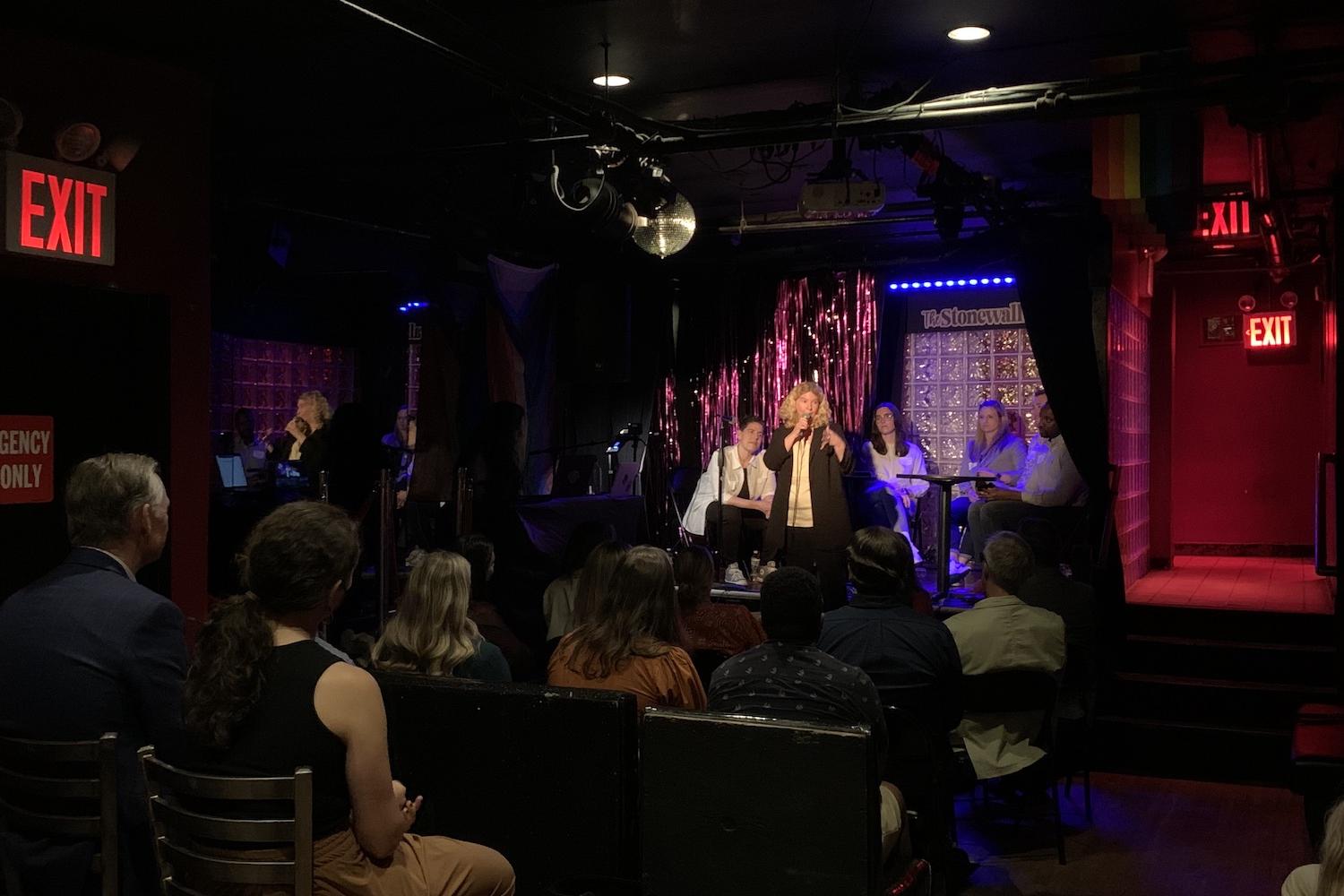
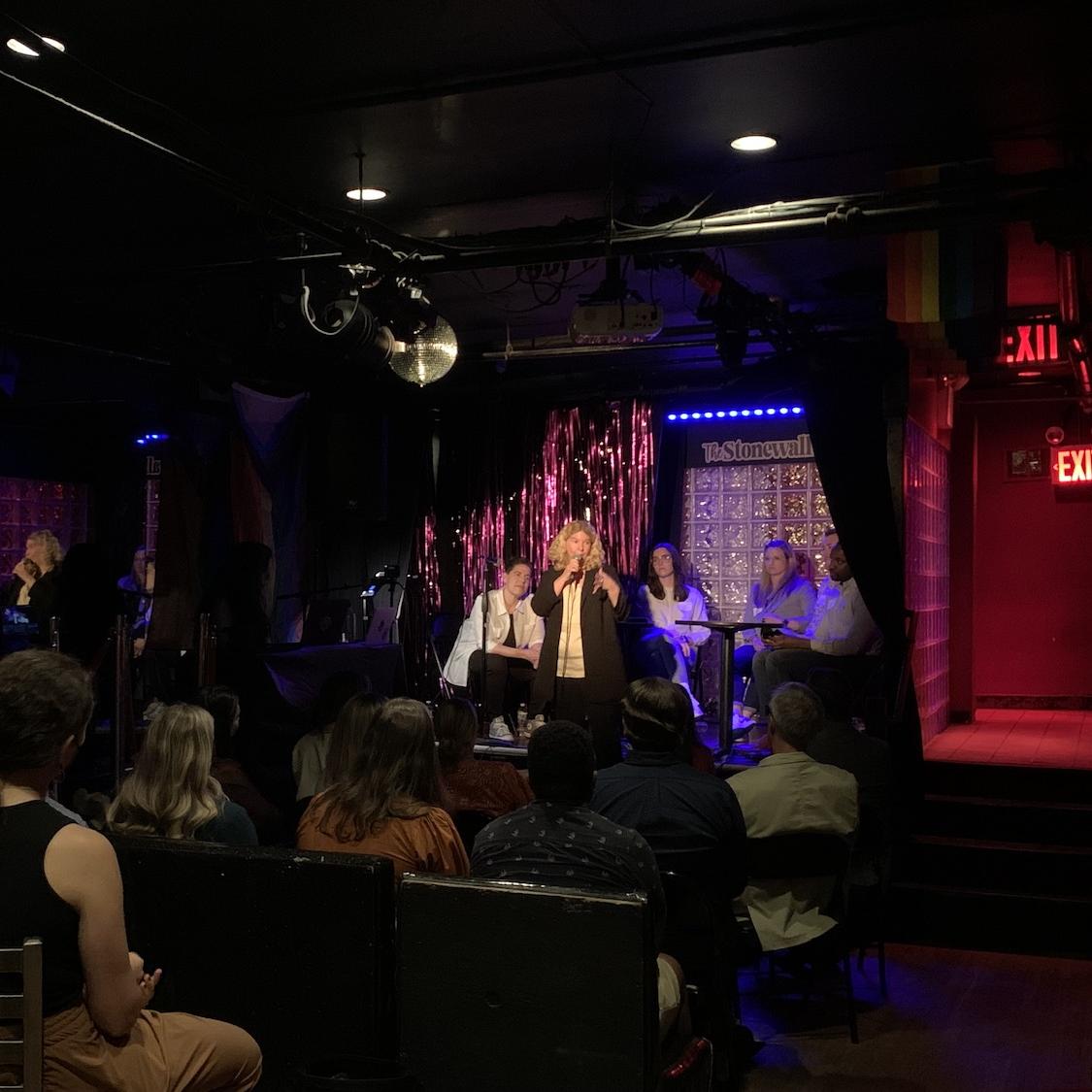
Left to right: Elana Knopp, Zachary Strauss, Avery Hammond, Jenna Patterson and Rashad Williams. Standing at the mic is Stacy Lentz, co-owner of the Stonewall Inn and CEO of the Stonewall Inn Gives Back Initiative (SIGBI).
Representation is an integral factor to bring about real change — especially as it affects marginalized communities. The power industry, which has historically employed an overly homogenous population of white men, could stand to learn a lot from an influx of diverse people and viewpoints. After all, equity of any type can only be achieved when everyone has a seat at the table and their voices are heeded, not just heard.
With this aim in mind, Edison Energy and its LGBTQ+ employee resource group hosted an all-LGBTQ+ panel at the historic Stonewall Inn last week that focused on how to promote queer representation in the energy sector and, by extension, improve outcomes related to climate change and environmental justice.
Continuing the fight
“The Stonewall is hallowed ground for many of us in the queer community,” said moderator Elana Knopp, the senior content writer at Edison Energy, at the beginning of the event. “It’s literally the epicenter of the gay pride movement." The historic Greenwich Village gay bar was the site of the Stonewall uprising in 1969 that sparked the gay rights movement in New York City and nationwide.
Renewed efforts by the conservative right to force LGBTQ+, and especially transgender, people back into the closet have heightened the need for this recognition and employee resource groups like Pride in Power. Just as the community’s fight for equal rights faces a massive disinformation campaign from the right wing, so does the fight against climate change, said panelist Brandon Rothrock, an assistant program manager at TRC Companies and board member at OUT for Sustainability, which focuses on mobilizing the LGBTQ+ community for social and environmental action.
The parallel may appear uncanny, as the climate crisis reached emergency proportions in the same timeframe that the Human Rights Campaign declared a state of emergency for LGBTQ+ people in the U.S. It’s the first time in 40 years that the campaign deemed an emergency necessary due to “discriminatory state laws that have created . . . dangerous environments for LGBTQ+ people across the country,” Knopp said.
Marginalized groups face the brunt of climate change
“One thing that’s been well-documented at this point is that the impacts of climate change have been disproportionately affecting marginalized communities, such as LGBTQ+ people and people of color (POC),” said panelist Rashad Williams, the director of subscriber services at Groundswell, which focuses on expanding equitable access to clean energy. “And when you combine the two, you start seeing a compounding effect of those impacts.”
Those who are both LGBTQ+ and POC have double the unemployment rate of people who are not in those categories, he said. That rate is triple if they are also transgender. Therefore, they’re more likely to live in low-income neighborhoods, which makes them more likely to experience the negative health effects of pollution and climate change, and less likely to have health insurance.
Perhaps the starkest portrayal of these compounding effects is found among the Guna people, an Indigenous group in Panama who are being forced from their island homes on Gardi Sugdub by rising seas. Guna culture is traditionally gender fluid and matrifocal — customs they could lose as they are absorbed and influenced by the majority Catholic and patriarchal social structure in mainland Panama.
Queer-centered action
It’s important to note that the environmental justice movement owes its inception to the BIPOC community, “the same folks that led the Stonewall uprising,” Knopp said. “The environmental justice movement was basically founded on the principle that everyone deserves to breathe clean air and drink clean water and have access to clean neighborhoods.”
Still, until recently the movement had not specifically focused on the queer community, she said.
The queer perspective is needed in the energy sector to ensure the switch to clean energy benefits everyone. Changes to infrastructure and access will only be as equitable as they are safe, said panelist Zachary Strauss, a policy analyst at Atlas Public Policy and the founder and president of Out in Energy, a community of LGBTQ+ people in the energy sector. Charging stations have to be in safe locations to be fully accessible, and electric buses won’t do the queer community any good if LGBTQ+ people have to risk their well-being to ride them.
The energy sector still has a long way to go. Workers in the field report the least confidence in their employer’s recruitment and hiring of members from the LGBTQ+ community compared to other marginalized groups, according to a report commissioned by the National Association of State Energy Officials. Panelists noted a few methods energy companies can utilize to better recruit and retain LGBTQ+ individuals, including mentorships, ERGs like Pride in Power, opportunities to socialize during work hours, inclusive language, and utilizing pronouns that make transgender and non-binary people feel safe as their authentic selves in the workplace.
Ultimately it starts from the top with a need for leadership to speak out and support the community by investing in the workforce, Strauss said. As well as “retention through affirmation” by ensuring people don’t have to hide who they are in the workplace.
Taking a stand when there are no guarantees
The clean energy sector does appear to be more conducive to LGBTQ+ employment, but the industry as a whole continues to struggle with anti-queer prejudice. Last year’s Pride in Energy survey found a 40 percent increase in discrimination over 2021.
While allies can, and must, do their part to support LGBTQ+ voices and action, there is no guarantee that power companies will do what’s needed going forward — especially under the current climate in which corporations that have historically presented themselves as allies are backtracking.
“It’s a little bit trickier making sure that your company takes a stand,” said Avery Hammond, Edison Energy’s senior clean energy analyst. “That’s a decision that’s not left up to most of us — none of us actually.”
This is why it’s more important than ever for allies and LGBTQ+ individuals to speak up, demand better, and reward companies that continue to fight the good fight. True environmental justice depends on it.
Environmental justice is, after all, a matter of civil rights.
Image courtesy of Edison Energy
A Net-Zero Value Chain is the Next Frontier in Ørsted’s ESG Journey
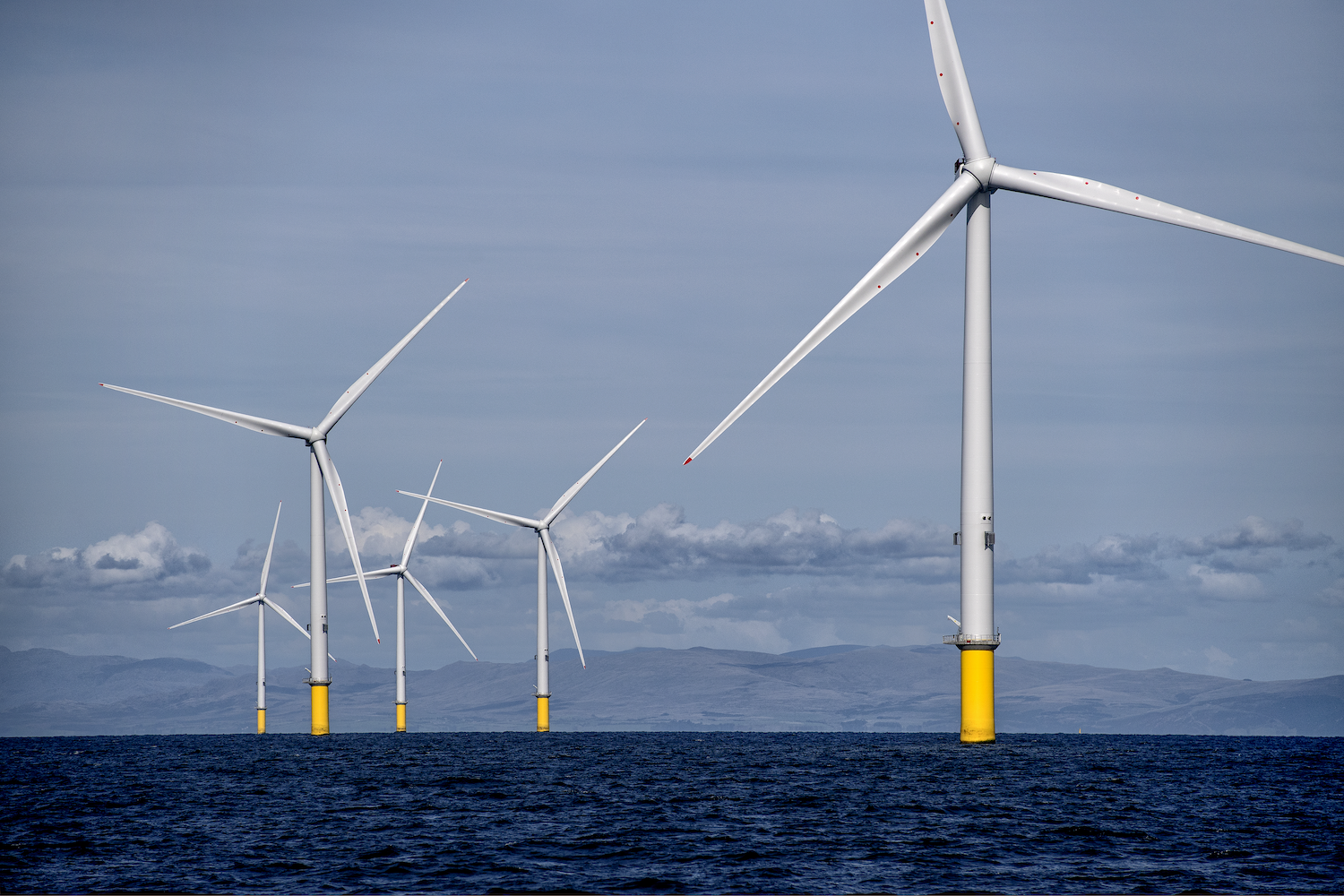
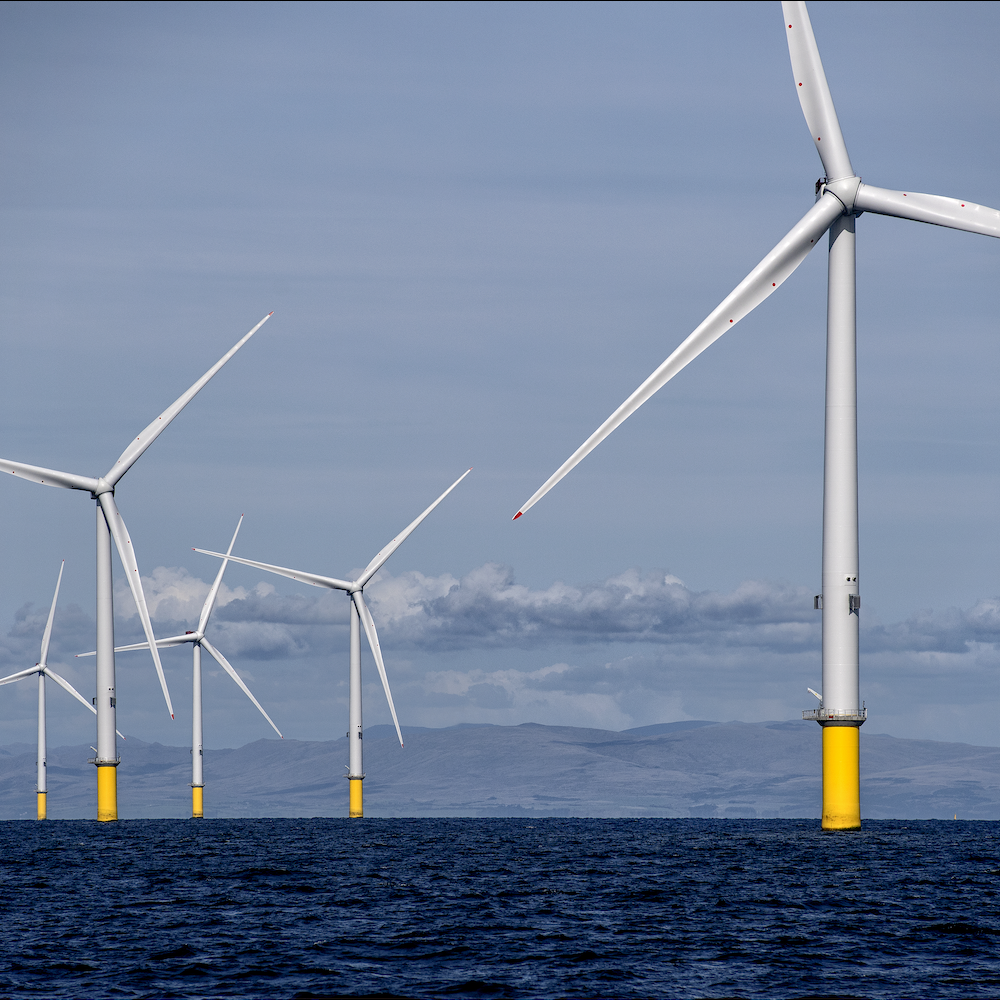
One of Ørsted's offshore wind installations. (Image credit: Ørsted)
While many companies today seek to align their operations with the imperatives of strong environmental, social and governance (ESG) performance, some firms put the ESG stake in the ground long ago. One of these is renewable energy giant Ørsted.
It was a surprising turn of events back in 2009 when Ørsted, formerly Dong Energy, was a thriving business almost entirely dependent on oil, gas and coal. The company began transitioning to renewable energy in 2010 and has since gone from being one of the most coal-dependent companies in Europe to transitioning its portfolio almost entirely to renewables.
Multiple pressures converge to change the trajectory of a company
The story of how that happened is one of multiple pressures, Ida Krabek, senior director and head of sustainability at Ørsted, told TriplePundit. “We could see the whole momentum around the climate building up and that our legacy business was under pressure. Our top management recognized that the future of energy was renewable energy and that to maintain a profitable business, we had to reconsider how we made our money,” Krabek said.
“There was also civil society pressure, including environmental protests against a new coal-fired power plant we were planning in Germany. And there was regulatory pressure, as the European Union began to launch regulation to tackle climate change,” she continued. “All of this was a very clear sign that the context we were operating under was changing.”
Toward a new kind of energy system
Today, Ørsted’s vision is a world that runs entirely on green energy. The company develops, constructs, and operates offshore and onshore wind farms, solar farms, energy storage facilities, renewable hydrogen and green fuels facilities, and bioenergy plants. Ørsted is recognized on the CDP Climate A List as a global leader in climate action and was the first energy company in the world to have its net-zero emissions target validated by the Science Based Targets initiative (SBTi).
The company has set ambitious targets, including reaching net-zero across the value chain (Scopes 1, 2 and 3) and a 90 percent reduction in absolute emissions (Scope 3, from gas sales) by 2040. In the shorter term, the company is looking to cut Scope 1 and 2 emissions intensity by 98 percent by 2025, using a 2006 baseline.
Though net-zero by 2040 may seem a tall order for an energy company, Krabek said the company is on track to meet the target. This is even in light of the Danish government ordering the company to postpone the shutdown of three coal units last year to help guarantee the country’s energy security.
“This has not been an easy journey,” Krabek told us. “It has required that we set a long-term vision for the company and stick to it to build the internal momentum and to have a suite of actions year on year that bring us in the right direction.”
Buy-in from C-level has been a consistent factor. “Our CEO and top management have stayed firm in the belief that this was the right direction for the company, and that has helped to build organizational focus and support over the years,” she added.
Embedding sustainability into governance structures
Another integral part of the company’s journey was ensuring that ESG objectives were integrated into corporate governance. Ørsted is working to ensure sustainability is embedded across all relevant parts of its operating model so that, as the company describes it in its 2022 Sustainability Report, “every colleague, every decision and every business development pull toward the same ambition.”
The company has three interrelated strategic pillars to ensure sustainability is integrated: decision-making and accountability; competencies and governance; and culture and leadership.
“Concern for the climate and the build of renewable energy has been core to our business strategy for more than a decade, so it has naturally been built into our governance structure,” Krabek said. “Our board has oversight, and we have top management who are familiar with taking decisions linked to ESG where the business case is often a bit different and more long-term than the traditional business case.”
ESG is now part of short-term incentive remuneration
In 2022, Ørsted strengthened ESG criteria in its executive team’s short-term incentive remuneration scheme, giving them the same weight as financial KPIs. “It’s not salary alone that incentivizes an organization,” Krabek said, “but it is a very important tool in showing what we value as an organization.”
This level of accountability is one very effective aspect of the company’s approach to governance for sustainability. Another is transparency. In addition to its annual Sustainability Report, Ørsted publishes an ESG Performance Report and each year includes more sustainability information in its Annual Report to investors. Additionally, the company published a Green Bond Impact Report in 2022.
On the data side, the company’s chief financial officer heads its Sustainability Committee and not only has strategic responsibility for sustainability, but is also responsible for ensuring the quality of the company’s ESG data, Krabek explained.
“I think it's extremely important that your organization and your top management trust the data that you have available in this space because then you understand the problem better, and it's also easier to make decisions on what to do next,” she said.
The next frontier: Decarbonizing the value chain
To positively impact the global challenge of climate change, Ørsted leaders recognize the company must look further than its own business. “For us, the next frontier is about making sure that our entire value chain footprint is net zero,” Krabek said. “As a growth business, that means decoupling growth from supply chain emissions. That is the next big challenge.”
Ørsted’s broader vision is to help the world’s energy systems move toward decarbonization — including more challenging sectors such as steel, concrete and shipping — while contributing to biodiversity rather than adding to massive biodiversity loss. The company has committed to net-positive biodiversity impact from all new renewable energy projects commissioned from 2030 at the latest.
The company also embraces the “S” or social impact in ESG in that it has a responsibility to contribute to a just transition to sustainable energy systems while protecting human rights.
“We want to be part of managing the impacts of the green transition in a way that makes it a force for positive change, because it is really a large-scale societal transformation that we will have to go through over the next decade,” Krabek said.
Because sustainability challenges are a moving target, every year Ørsted conducts a sustainability themes analysis to identify, assess, and prioritize the themes that matter to its stakeholders and business. The five issues that emerged in last’s assessment were carbon emissions from renewable energy supply chains, biodiversity and local ecosystems, reusing, recycling and avoiding waste,, communities, and human and labor rights.
“While we want to play a leading role, it’s really an industry ambition that we cannot solve on our own. It requires dialogue with our suppliers and other stakeholders,” Krabek concluded. “Active collaboration is key.”
This article series is sponsored by Workiva and produced by the TriplePundit editorial team.
Americans Are Facing a Gap in Racial and Generational Wealth. Northwestern Mutual is Working to Help Close It.
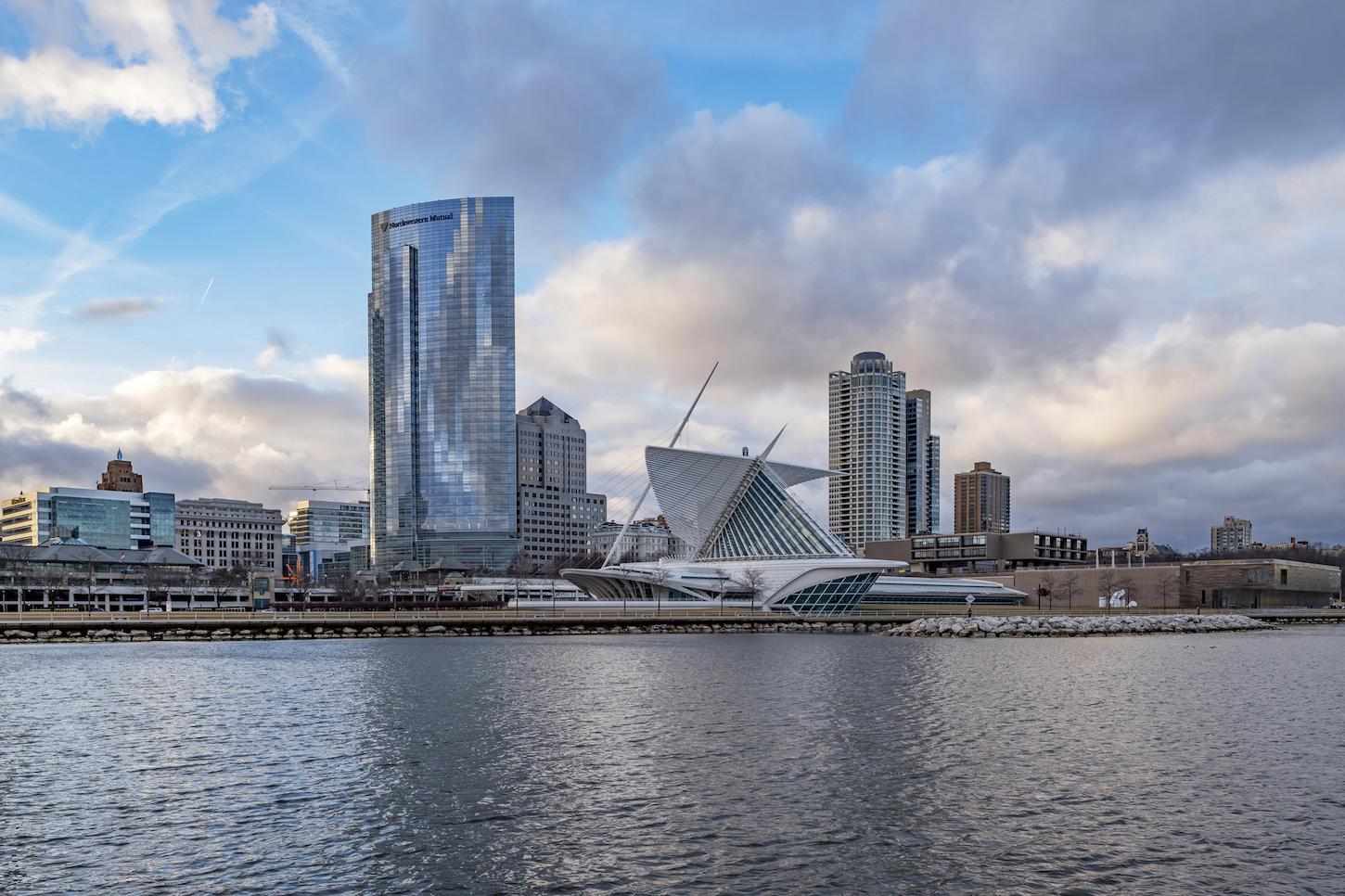
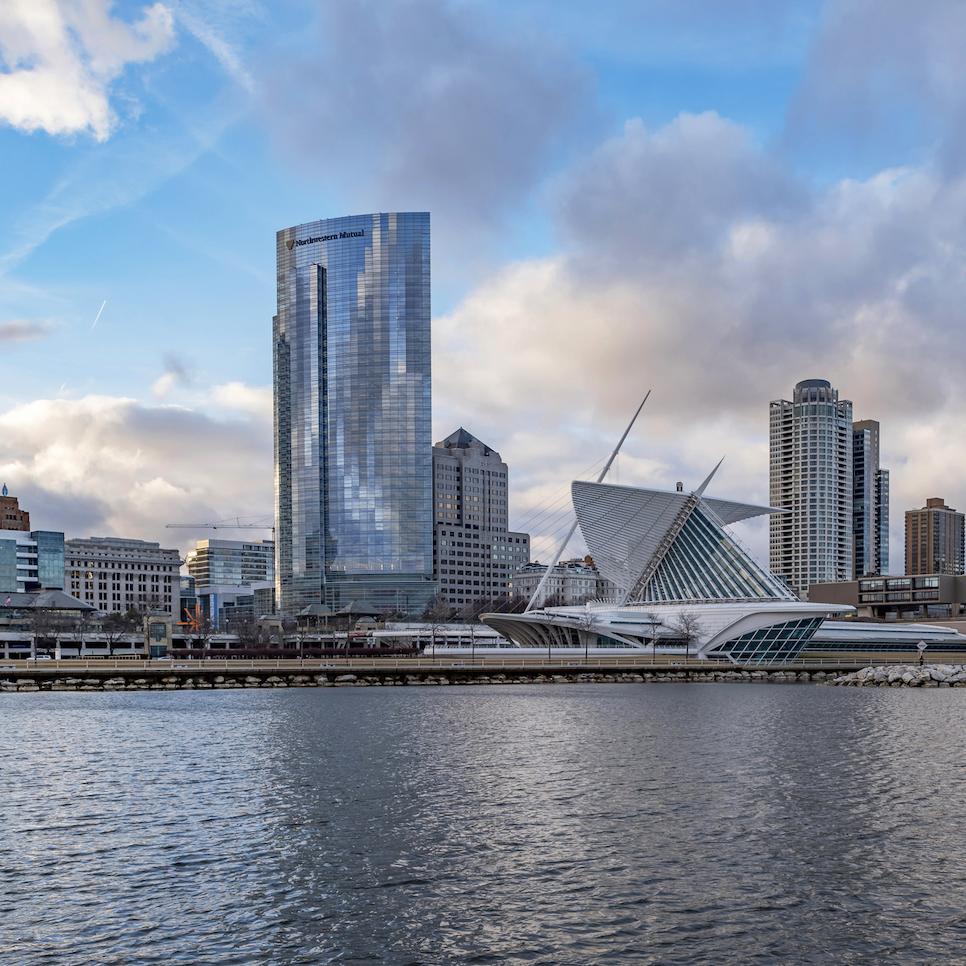
Northwestern Mutual invests locally in its home city of Milwaukee and across the U.S. through a $100 million impact investing fund.
The racial wealth gap isn’t closing as it should be. After years of modest gains, it began to widen again in the 1980s and continued at a rate of .01 percent per year through 2020. While the cause is systemic, there is plenty that can be done to rectify the imbalance. Corporations, and financial institutions in particular, have both the ability and the responsibility to work toward closing this gap.
“We still have a gap in the ways individuals build their net-worth to ultimately create wealth and how that is then transferred to their children and grandchildren,” Kamilah Williams-Kemp, vice president, risk products at Northwestern Mutual, told TriplePundit. “But the financial planning industry is making some real strides in shifting the mindset and the conversations that we're having about wealth-building.”
From investing in communities of color and ensuring programs and processes are equitable for clients and employees alike, companies like leading financial services company Northwestern Mutual are working to drive this sustainable change.
Williams-Kemp, who has spent 20 years in the financial sector, said she has a much deeper sense of optimism than she did a decade ago. By and large, she sees more honesty and recognition of those systemic and historical barriers at the leadership level — and more collaborative work to fix it. “It's unfortunate that we're still in this space, but at the same time, there’s nothing but opportunity in front of us as a country. And specifically for Northwestern Mutual as we aim to be a part of ensuring that the gains in education and income are matched with wealth creation and the transfer of wealth.”
Protecting wealth and supporting entrepreneurs through community investment
There is no question as to the origin of the wealth gap between Black and white Americans. White families had 23 times the wealth of Black families after the Civil War, and the gap still stands at 6 to 1 today.
Access to capital and the ability to hand it down from generation to generation is integral to building wealth over time. Northwestern Mutual’s approach to bridging the gap takes both elements into account through its comprehensive financial planning process that enable individuals to grow and protect their own wealth through insurance and investments, as well as making community investments that provide diverse entrepreneurs with funding and support to build businesses that last.
“Our main mission as a company is to alleviate Americans of financial anxiety. It's something that, as a country, we don't talk enough about,” Williams-Kemp said. "Building financial security for people can feel very personal, but our planning approach focuses on helping people identify their hopes, dreams and aspirations so that we can provide the building blocks to actually achieve them.”
The company is working hard to close the racial wealth gap through community investments and support for entrepreneurs — namely through the Sustained Action for Racial Equity (SARE) task force, the Black Founder Accelerator Program and engagement with community development financial institutions (CDFIs). Additionally, the company launched a $100 million impact investing fund, which invests locally in its home city of Milwaukee and across the U.S.
"Financial inclusion and Black and African American prosperity is one of our top priorities,” Abim Kolawole, chief audit executive at Northwestern Mutual, told 3p. “One aspect we’re focused on is increasing diversity among our suppliers and spending, which we have done dramatically. Just last year we inked more than $10 million in contracts with Black-owned suppliers.”
Lack of access to capital has been a huge barrier for Black entrepreneurs — both historically and at present. And since business ownership is one of the primary ways of building wealth, that lack of access is a major contributor to the wealth gap, which is why Northwestern Mutual has made it a primary concern.
“We've invested in Black and African American venture capital funds directly. But there's also a sum total of about nine investments we've made and deployed, with commitments up to about $75 million out of a total of $100 million that is earmarked,” Kolawole explained. “We have funded $5 million so far to two CDFIs which are identifying local Black- and African American-owned businesses that are in need of capital, underwriting their business models, assessing the need for the capital on their suitability, and deploying those funds.”
Northwestern Mutual has also set aside $20 million from its venture capital fund for Black- and African American-owned businesses, entrepreneurs and startups, Kolawole said. Additionally, the financial institution’s Black Founder Accelerator Program acts as an incubator for startups. “Entrepreneurs spend 12 weeks in the program getting a lot of technical know-how, assistance with their business model and pressure testing,” he said. “But more importantly, they get access to $100,000 in capital as well as networking.”
A long-term commitment from top leadership
Kolawole credits leadership as the key to Northwestern Mutual’s dedication in this space. “Our efforts to drive racial equity was chartered by our CEO, and I think that's very important,” he said. “To get that sustainment, you need leadership from the top.” This type of commitment is one our leadership feels passionate about and like many others following the murder of George Floyd in June 2020, vocalized in an effort to hold itself and others accountable.
“I'm proud to say that we had already invested substantial time, energy, and capital into our diversity and inclusion efforts for more than a decade before George Floyd’s murder,” Williams-Kemp added. “And in that moment of time, it gave us an extra push to make sure we were being bold enough in our aspirations, and we were really holding ourselves accountable to progress for the roadmap we'd already established. It actually enabled us to double down on the commitments we'd already made.”
Along with positively impacting communities, the company’s efforts to advance racial equity have struck a positive chord among employees — Kolawole included. “It warms my heart to be with a company that's so well positioned to do the right thing,” he said. “It’s enabling me to lead the charge in something that I'm tremendously passionate about.”
To learn more about Northwestern Mutual’s enterprise sustainability, D&I and community impact, visit here.
This article series is sponsored by Northwestern Mutual and produced by the TriplePundit editorial team.
Image courtesy of Northwestern Mutual.
A Corporate Strategy for Supporting LGBTQ Rights in the Age of Boycotts
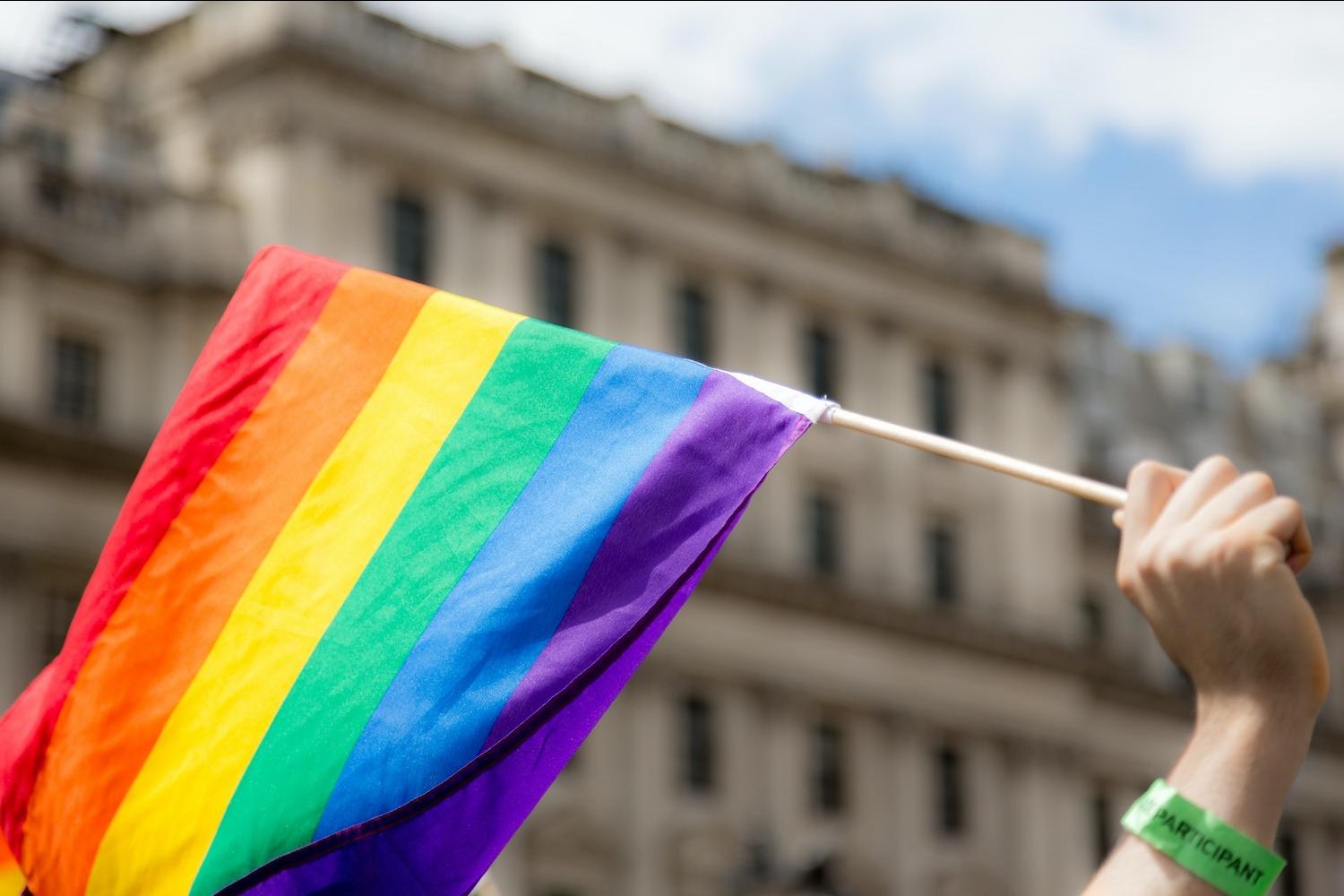
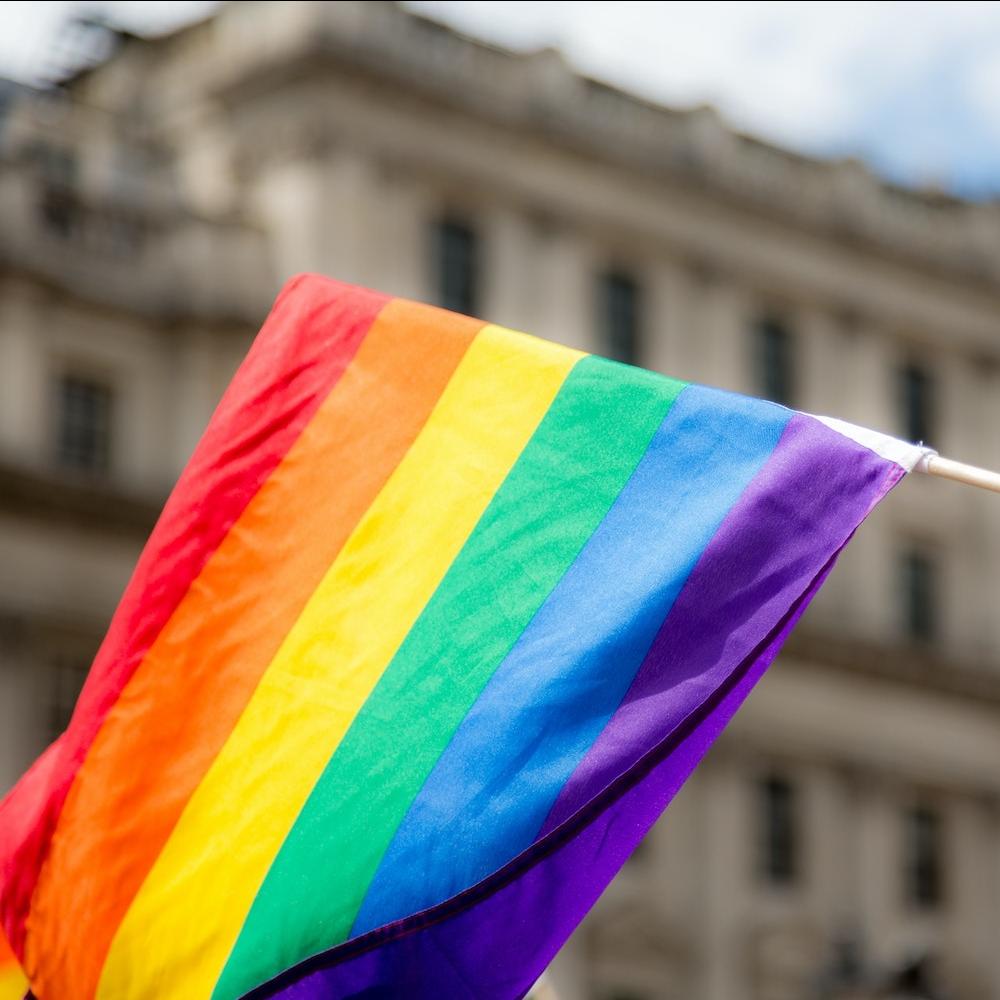
Navigating a politically fractured landscape and a torrent of social media-fueled boycotts is a complex exercise, but it does not have to be a difficult one. Brands that focus on core values that support all stakeholders — corporate, customer and employee — will be less vulnerable to reputational damage from boycotts and more likely to continue thriving in an increasingly diverse society.
When boycotts work
A boycott can stir up considerable media attention, but that doesn’t necessarily mean it can succeed in forcing a business to change its behavior.
In fact, consumer boycotts can be notoriously difficult to sustain. Starbucks is a case in point. The brand has weathered a string of boycotts in recent years, all to no effect.
On the other hand, research shows that boycotts can be effective when they target a brand that is already experiencing reputational decline. Social media exacerbates that reputational effect by handing a bullhorn to millions of otherwise voiceless people.
Aligning corporate culture with consumers
The social media effect makes it all the more important for brands to know the values of their customers, especially in the context of political polarization.
A 2019 article in KelloggInsight, the magazine Northwestern University’s Kellogg School of Management, underscores that point. Writer Samantha Eyler-Driscoll explained that the largely urban, liberal clientele of SoulCycle pushed back vigorously when news surfaced that the chair of its parent company was planning a campaign fundraiser for former U.S. President Trump. Conversely, a conservative-lead boycott against Nike and its spokesperson Colin Kaepernick failed to gather traction. Instead, strengthened its reputation among its core consumers, including younger consumers and liberal-leaning sneaker fans.
The recent episode involving AB InBev paints a more nuanced picture. The company’s best-selling Bud Light brand came under withering fire from conservatives in April, after Bud Light gifted a special-edition can to the transgender actor, activist and social media influencer Dylan Mulvaney. Beer drinkers on the left were also outraged when AB InBev failed to push back strongly. Sales of Bud Light plunged in May, though AB InBev is still having a banner year overall and some analysts expect the Bud Light brand to recover over the long term.
Two food industry giants take a stand
In a contrast to AB InBev’s stumbling response, the leading U.S. food service brands Chick-fil-A and Cracker Barrel seem to have breezed over two recent social media incidents of their own. In both cases, the transition from a conservative corporate culture to a more inclusive one appears to have had an impact.
Chick-fil-A is privately owned by members of the Cathy family, through which the brand has become known for anti-LGBTQ activism. However, over the past 10 years the company has taken steps to cut ties with anti-LGBTQ groups while also expanding its environmental stewardship profile.
The crossover from environmental sustainability to social inclusiveness seems to have grown in recent years. The company established the position of vice president for diversity, equity and inclusion as far back as 2021, if not earlier, and its website includes a detailed message about its DEI policy.
The trouble began on May 31 when a single social media post mischaracterized the vice president’s role as a new position. The post set off a firestorm of calls for a boycott from conservatives, to which Chick-fil-A has not formally responded as of this writing.
Silence could be the most effective strategy in this case. After all the work Chick-fil-A has undertaken to change its behavior and move past its anti-LGBTQ image, it is unlikely for the company to allow one social media episode to set it back.
Food habits are hard to break
As a food service company, Chick-fil-A is also shielded by the fact that food habits are notoriously hard to change. In her article for KelloggInsight, Eyler-Driscoll cites School of Management professor Brayden King, who has done extensive research on boycotts “Consumers tend to have an empowered voice but weak behavioral will,” King told her.
“Some people expressed the belief that they had engaged in a boycott, but when we look at their actual purchasing behavior, there’s no difference in purchasing between those who believed they’ve boycotted and those who did not support the boycott,” he added.
The twin dynamic of food and habit appears to be at work in the case of Chick-fil-A and Cracker Barrel. The latter came under fire from conservatives last week when it posted a photo of its signature front porch display of rocking chairs, including one painted in rainbow stripes.
“We are excited to celebrate Pride Month with our employees and guests,” the post read. “Everyone is always welcome at our table (and our rocker). Happy Pride!”
As with Chick-fil-A, Cracker Barrel has not responded to the calls for boycott. Most likely, it will not. The company still has a solid footing in its conservative image, but it has also been reaching out to accommodate the more diverse tastes of today.
In one indication of the company’s ability to manage social media adversity, Cracker Barrel survived another conservative media firestorm last summer after it added a plant-based sausage to its menu.
Despite the recent torrent of anti-ESG activity and rhetoric about “woke” businesses, Cracker Barrel has also continued to advocate for environmental, social and governance practices on its website and expand its ESG reporting. “We have committed to drive environmental, social and governance (ESG) issues forward,” the company states. Stepping back from those commitments over one social media episode is unlikely.
ESG is good for business
Eyler-Driscoll cautions that a high-profile, media-enabled boycott could damage a company’s reputation, even if it has little or no direct impact on consumer behavior. The reputational factor could spill over into employee recruitment and retention, for example.
In that regard, ESG principles that attract customers and clients can also provide a risk-avoiding shield.“Savvy companies that do try to connect with customers on a personal level often choose, of their own volition, to engage in corporate social responsibility activities, such as building sustainable supply chains, developing worker-friendly policies, or engaging with various communities,” Eyler-Driscoll noted.
“The key is for companies to know who they are, and who their core stakeholders are, and what those stakeholders believe in," King said.
With public opinion firmly on the side of ESG principles, even conservative-leaning brands have plenty of incentive to stick to the principles of civil rights and social progress, regardless of boycott threats.
Image credits: Ian Taylor and Sara Rampazzo via Unsplash